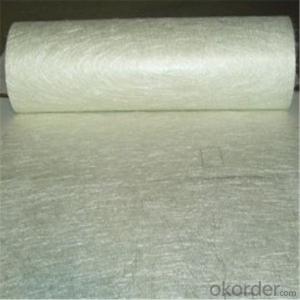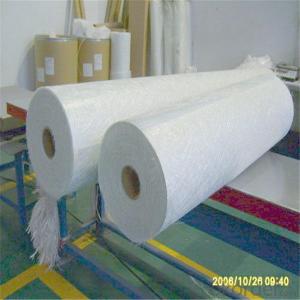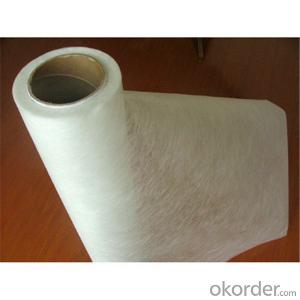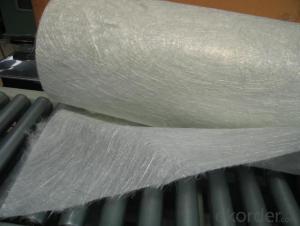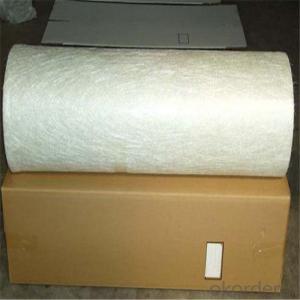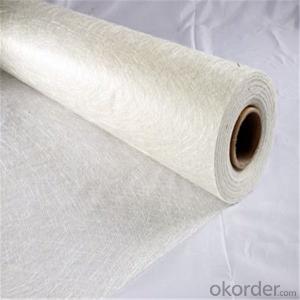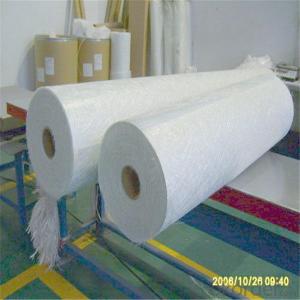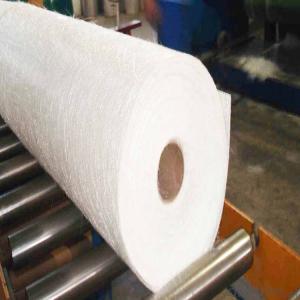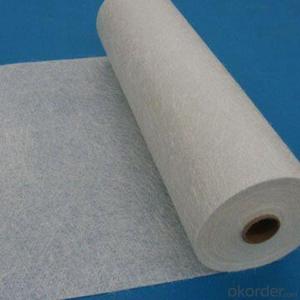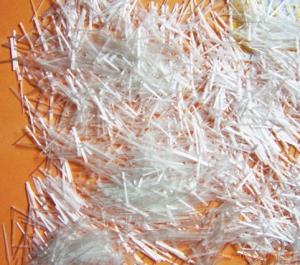Fiberglass Powder Chopped Stand Mat General Purpose
- Loading Port:
- Tianjin
- Payment Terms:
- TT OR LC
- Min Order Qty:
- 100 m.t.
- Supply Capability:
- 20000 m.t./month
OKorder Service Pledge
Quality Product, Order Online Tracking, Timely Delivery
OKorder Financial Service
Credit Rating, Credit Services, Credit Purchasing
You Might Also Like
Quick Details
| Technique: | Chopped Strand Fiberglass Mat (CSM) | Dimensions: | 450gsm | Mat Type: | Continuous Filament Mat |
| Fiberglass Type: | E-Glass | Softness: | softness | Place of Origin: | Jiangxi, China (Mainland) |
| Brand Name: | cnbm | Model Number: | 450gsm | color: | white |
| fiberglass type: | E glass | product: | e-glass powder chopped stand mats | binder: | powder or emulsion |
| width: | 1040 or 1270mm, as your requirement | weight: | 30 or 45kg/roll | paper tube diameter: | 90mm |
| outer diameter of roll: | 256mm | packing: | plastic film+carton box + pallet |
Packaging & Delivery
| Packaging Details: | plastic film+carton box + pallet |
| Delivery Detail: | 15-20days |
Specifications
1.e-glass powder chopped stand mats
2.binder:power or emulsion
3.width:1040mm or 1270mm
4.weight:450gsm
Picture
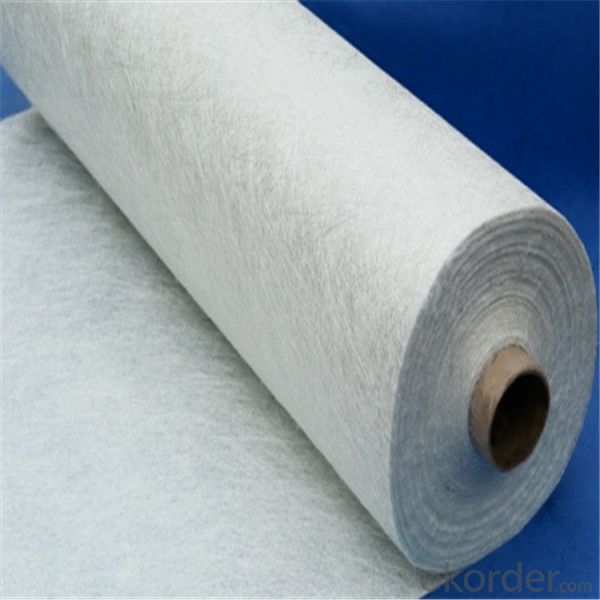
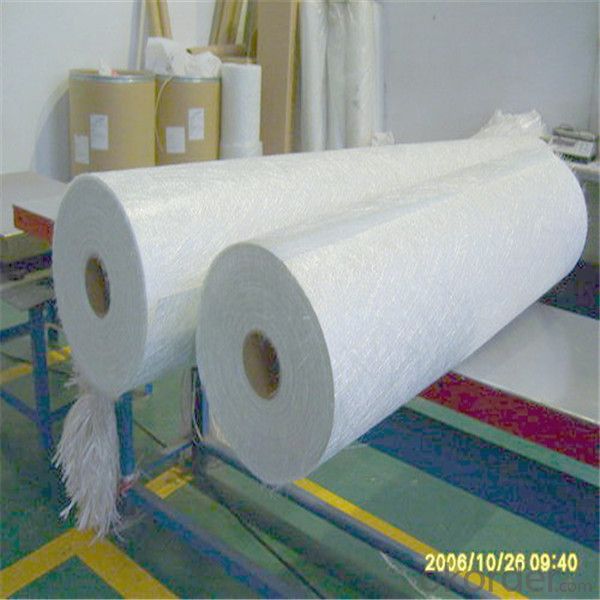
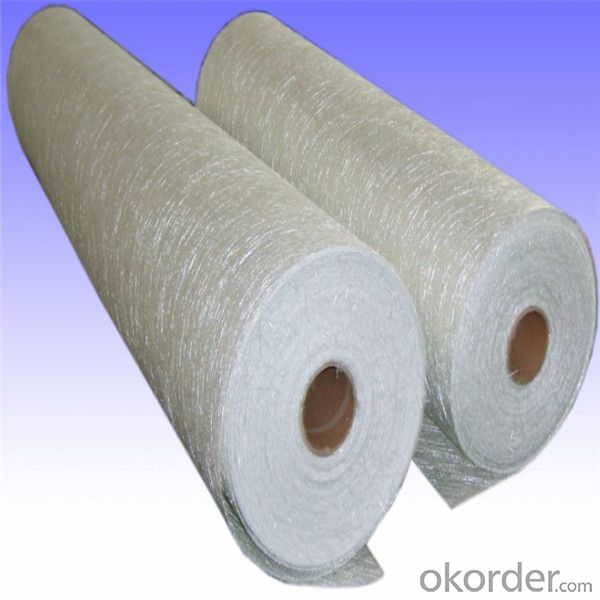
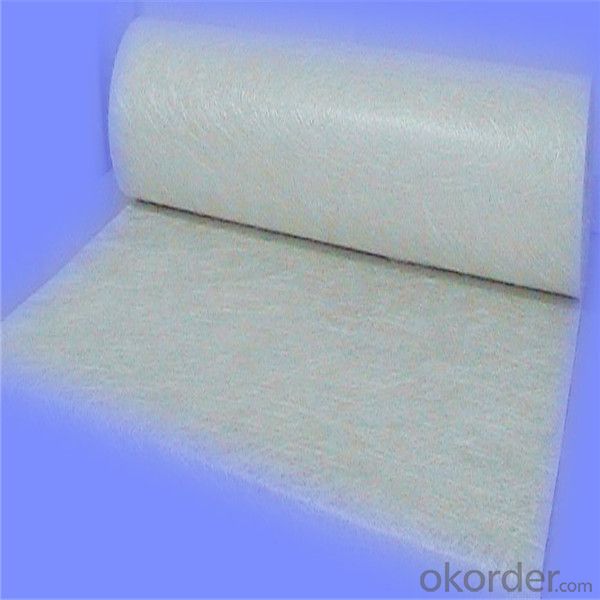
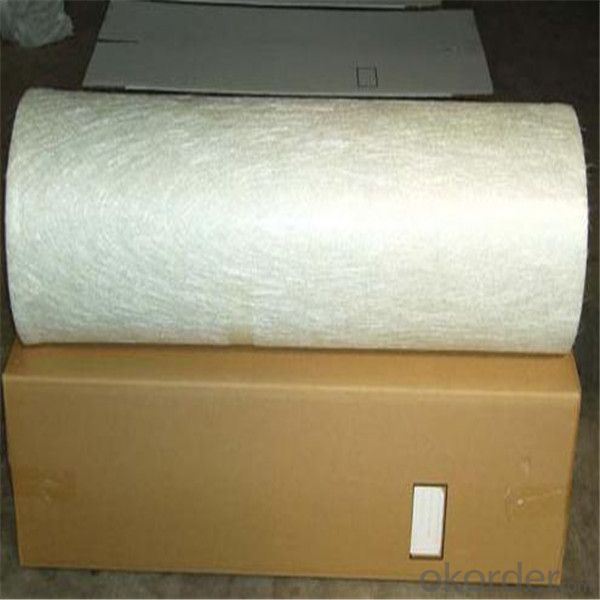
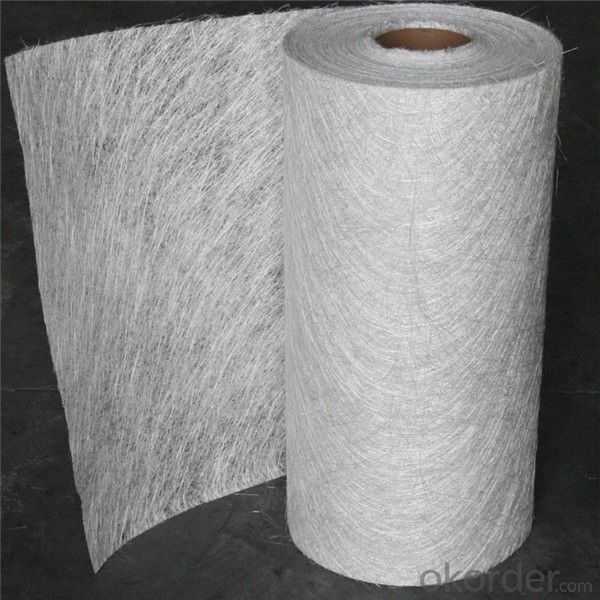
- Q:Is fiberglass chopped strand compatible with different joining techniques?
- Yes, fiberglass chopped strand is compatible with different joining techniques. It can be joined using various methods such as adhesive bonding, mechanical fastening, and fusion welding. Adhesive bonding involves using a suitable adhesive to bond the chopped strand to another material or to join multiple chopped strand components together. Mechanical fastening involves using screws, bolts, or rivets to connect the chopped strand to other materials. Fusion welding can be used to join chopped strand components together by melting and fusing the fibers using heat. The compatibility of fiberglass chopped strand with different joining techniques makes it a versatile material for various applications in industries such as automotive, construction, and aerospace.
- Q:Is fiberglass chopped strand compatible with different recycling processes?
- Yes, fiberglass chopped strand is compatible with different recycling processes. It can be processed through mechanical recycling methods where it is shredded and then melted to form new products. It can also be chemically recycled through processes such as pyrolysis or solvolysis, where it is broken down into its constituent components for reuse. Additionally, fiberglass chopped strand can be used as a reinforcement material in composite recycling, where it is incorporated into new composite materials. Overall, fiberglass chopped strand is versatile and can be effectively recycled through various processes.
- Q:Can fiberglass chopped strand be used in the production of aerospace interiors?
- Indeed, the utilization of fiberglass chopped strand is viable in the manufacturing process of aerospace interiors. Fiberglass is a highly versatile and lightweight substance that possesses an impressive strength-to-weight ratio, rendering it appropriate for a wide range of applications within the aerospace industry. Chopped strand fiberglass can be effectively employed to fortify composite materials utilized in the production of various aircraft interior components, including but not limited to bulkheads, cabin panels, ceiling panels, and other essential structural elements. This reinforcement ensures heightened durability and rigidity, thereby guaranteeing the structural integrity of these interior components while simultaneously maintaining a lightweight design. In addition, fiberglass chopped strand can also serve as insulation within aerospace interiors, providing valuable thermal and acoustic properties. On the whole, the utilization of fiberglass chopped strand presents numerous advantages that establish it as an ideal material for the production of aerospace interiors.
- Q:How to design toxic liquid container on ordinary pressure? ?
- Color should be in accordance with the provisions of Table 3, It is not easy to fall off with tank welding and repair welding. First smear the soap water in outside of the tube and immerse it under the water.12.4 ~ 4 and.4, moisture tank rubber products corrosive liquid fire equipment in the store, corrosion resistance and oil resistance, liquid injection port sealing test technology of.4 file includes the following.7.4.4 tank hole and liquid injection port 4.5 strength layer the corrosion resistant resin as base material 11 tank factory inspection surface hardness value should reach 34 or more. 4; 484-1999 T automotive paint coating 3 defines this standard using the following definitions.1.2.3 4. 3, its minimum wall less than 5mm End socket should be oval-shaped one Nitrogen should be set in the right side with the resin content 30%-50% Close the inlet valve Set crosswise swash plate in the tank. Test bench test on a dedicated vent valvechecking table . 5.3.2 Tank mark a) The tank must be sprayed around the center line of the level of the tank to present the variety of the thing which is transporting: a) Name of manufacturing unit. 5, the test method according to the 5, the outer surface should be smooth and bright, so that the oxygen content is 18% ~ 23% (volume ratio).
- Q:Can fiberglass chopped strand be used in the production of aerospace composites?
- Yes, fiberglass chopped strand can be used in the production of aerospace composites. It is commonly used as a reinforcement material due to its high strength-to-weight ratio, excellent thermal properties, and resistance to corrosion.
- Q:What are the environmental impacts of using fiberglass chopped strand?
- The utilization of fiberglass chopped strand can yield both positive and negative consequences for the environment. On the positive side, fiberglass proves to be an extremely durable substance that finds utility in a range of applications, including construction and manufacturing. Its high strength-to-weight ratio makes it an efficient alternative to other materials, resulting in reduced material requirements overall and potentially lowering energy consumption during production and transportation. Nevertheless, the creation and disposal of fiberglass chopped strand also inflict several adverse effects on the environment. Firstly, the manufacturing process necessitates the extraction and processing of raw materials such as silica sand, limestone, and soda ash. These procedures demand significant amounts of energy and can contribute to air and water pollution, as well as the destruction of habitats in the areas where these materials are sourced. Moreover, the production of fiberglass entails the use of chemicals, like resins and binders, which, if not handled properly, can pose risks to both human health and the environment. The release of these chemicals during manufacturing or disposal can contaminate the air, water, and soil, detrimentally impacting ecosystems and potentially causing health hazards for humans and wildlife alike. Furthermore, fiberglass is non-biodegradable, meaning that once it reaches the end of its useful life, it can contribute to landfill waste or require energy-intensive recycling processes. Inadequate disposal of fiberglass can result in environmental pollution and the long-term accumulation of non-biodegradable waste. To counteract these environmental impacts, it is crucial to incorporate sustainable practices throughout the life cycle of fiberglass chopped strand. This may include the use of recycled or eco-friendly materials in production, the implementation of proper waste management and recycling programs, and the adoption of energy-efficient manufacturing processes. Additionally, it is of utmost importance to handle and dispose of fiberglass waste correctly to prevent its release into the environment. In conclusion, while fiberglass chopped strand offers certain benefits, it is imperative to consider and address its environmental impacts in order to ensure a more sustainable and responsible use of this material.
- Q:What are the water absorption properties of fiberglass chopped strand?
- Fiberglass chopped strand has excellent water absorption properties. Due to its composition, it is resistant to moisture and does not absorb water easily. This makes it ideal for applications where water resistance is required, such as in the construction industry or for making water tanks and pipes.
- Q:Is fiberglass chopped strand suitable for applications requiring low thermal conductivity?
- No, fiberglass chopped strand is not suitable for applications requiring low thermal conductivity. Fiberglass has relatively high thermal conductivity, which means it is a good conductor of heat. For applications where low thermal conductivity is required, other materials such as insulation materials or composites with lower thermal conductivity should be used.
- Q:Is fiberglass chopped strand suitable for applications requiring high corrosion resistance?
- Fiberglass chopped strand is not suitable for applications that require high corrosion resistance. Despite its many excellent properties, such as high strength-to-weight ratio, dimensional stability, and electrical insulation, fiberglass is not inherently resistant to corrosion. It is a composite material consisting of glass fibers embedded in a resin matrix, which can degrade when exposed to corrosive environments. If you need high corrosion resistance, it is advisable to use materials specifically designed for this purpose, such as stainless steel, aluminum, or corrosion-resistant polymers. These materials offer superior resistance to corrosion and are better suited for applications where protection against chemical or environmental attacks is essential.
- Q:What are the typical tensile properties of fiberglass chopped strand composites?
- Fiberglass chopped strand composites are known for their impressive tensile properties, including high strength, stiffness, and excellent resistance to breakage when subjected to tension. The specific composition and manufacturing process determine the tensile strength of these composites, which can vary from 500 MPa to 2 GPa. Moreover, these composites exhibit a high modulus of elasticity, ranging from 20 GPa to 80 GPa, indicating their ability to withstand deformation when exposed to tensile forces. This stiffness makes fiberglass chopped strand composites suitable for applications that require structural integrity and load-bearing capabilities. Additionally, these composites possess good elongation at break, typically ranging from 1% to 5%, demonstrating their ability to endure stretching and prevent sudden failure. Ultimately, the excellent tensile properties of fiberglass chopped strand composites make them highly sought after in industries such as automotive, aerospace, construction, and marine, where strength and durability are paramount.
1. Manufacturer Overview |
|
|---|---|
| Location | |
| Year Established | |
| Annual Output Value | |
| Main Markets | |
| Company Certifications | |
2. Manufacturer Certificates |
|
|---|---|
| a) Certification Name | |
| Range | |
| Reference | |
| Validity Period | |
3. Manufacturer Capability |
|
|---|---|
| a)Trade Capacity | |
| Nearest Port | |
| Export Percentage | |
| No.of Employees in Trade Department | |
| Language Spoken: | |
| b)Factory Information | |
| Factory Size: | |
| No. of Production Lines | |
| Contract Manufacturing | |
| Product Price Range | |
Send your message to us
Fiberglass Powder Chopped Stand Mat General Purpose
- Loading Port:
- Tianjin
- Payment Terms:
- TT OR LC
- Min Order Qty:
- 100 m.t.
- Supply Capability:
- 20000 m.t./month
OKorder Service Pledge
Quality Product, Order Online Tracking, Timely Delivery
OKorder Financial Service
Credit Rating, Credit Services, Credit Purchasing
Similar products
New products
Hot products
Hot Searches
Related keywords
